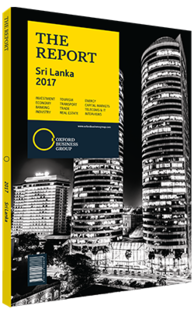While Sri Lanka's overall unemployment is low, disparity between genders and levels of education exist
Sri Lanka’s robust economic growth in recent years has boosted job creation, but the country still faces the challenges of high youth unemployment on one hand and skills shortages on the other.
On The Job
The number of people employed in Sri Lanka rose by 1.5% in 2016 to nearly 7.9m, up from 7.8m in 2015, according to the Central Bank of Sri Lanka (CBSL). Job growth was driven by the industry and services sectors, which saw employment rise from 2m to 2.1m and 3.6m to 3.7m, respectively, over the year. The agriculture sector, however, saw a decline in employment from 2.3m to 2.2m due to the difficult farming year – particularly brought on by drought. But there has also been a natural erosion of the proportion of labourers employed in agriculture as Sri Lanka’s economy has modernised. By end-2016 services accounted for 46.5% of total employment, with the industry and agriculture sectors coming in at 26.4% and 27.1%, respectively.
The private sector has been a principal source of job creation, with the proportion of the workforce directly employed by private companies rising from 41% in 2015 to 43.3% in 2016, while the public sector’s share of employment fell from 15.1% to 14.6%. The self-employed accounted for 31.6% of the total in 2016, while those classified as employers were recorded at 2.7%. The final category, unpaid family workers, accounted for 7.8%.
Unemployment
Unemployment on the whole is fairly low and declining in Sri Lanka, falling from 4.9% in 2010 to 4.4% in 2016. However, this masks discrepancies in gender, geography, age and level of education. Female unemployment is considerably higher – averaging 7% in 2016 – while male unemployment is below the overall average, at 2.9%.
Interestingly, unemployment rises in correlation with the level of education, indicating that the later stages of the education system are not necessarily delivering the skills needed by the job market. The unemployment rate for those with education level GCE (A/L) – that is, qualifications upon leaving school at age 18 or 19 – and above stood at 8.3% in 2016, down a percentage point from 9.2% in 2015, but still well above the 3.3% unemployment rate among those with only grade 6-10 education. Unemployment among Sri Lankans up to the GCE (O/L) level – school stopped around the age of 15 or 16 – was 5.9% that same year.
Youth Challenge
The scale of Sri Lanka’s youth unemployment challenge is clear from the fact that the proportion of 15-24 year olds without a job rose in 2016, even as the economy was generating more jobs and unemployment was otherwise falling across the board. Youth unemployment reached 21.6% that year, up from 20.8% in 2015. As the CBSL noted, this has an impact on economic growth and poverty reduction.
In 2015 the Department of Census and Statistics added a new measure – the proportion of young people not engaged in employment, education or training, which stood at 25.8% that year. The CBSL stated that those in this category risk social exclusion and poverty unless they enter the labour force in the medium term.
Opportunities
While programmes are available to train young people, the government is planning to increase their scope and encourage internship and apprenticeship schemes. With sectors such as construction and hospitality facing a shortage, the potential exists for training young people for in-demand jobs.
The construction industry alone needs 400,000 new workers to meet demand from a surge in infrastructure investment and housebuilding, Nissanka Wijeratne, the head of the Chamber of Construction Industry, told global media in April 2017. The government believes that approximately 200,000 foreigners may be illegally employed in the sector, and is planning moves to limit the emigration of construction labourers.
Sri Lanka also has supportive international partners on this front. The World Bank approved a $100m credit package to support job creation in July 2016, with a focus on reducing barriers to private sector growth and enhancing integration with the global economy.
You have reached the limit of premium articles you can view for free.
Choose from the options below to purchase print or digital editions of our Reports. You can also purchase a website subscription giving you unlimited access to all of our Reports online for 12 months.
If you have already purchased this Report or have a website subscription, please login to continue.

